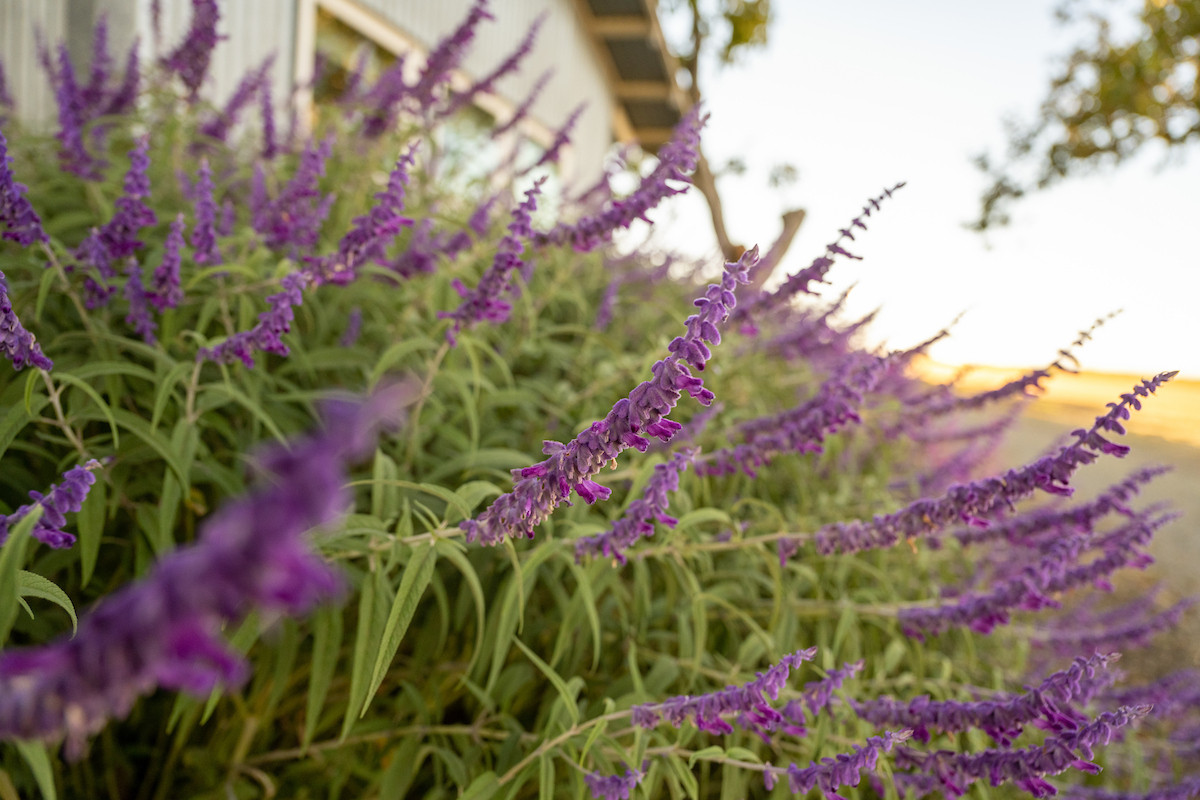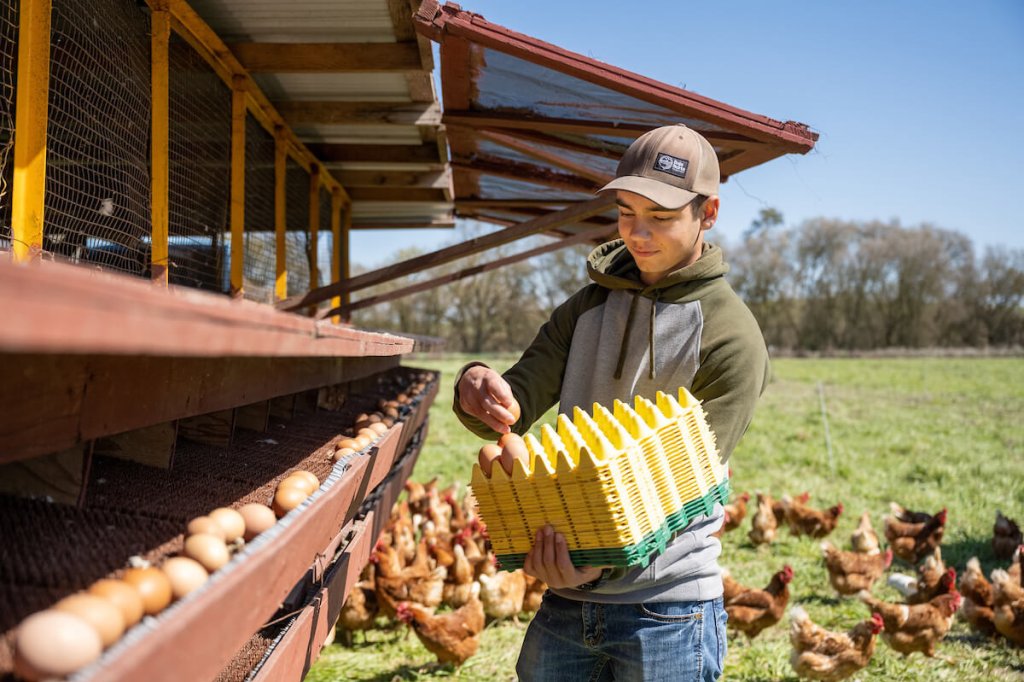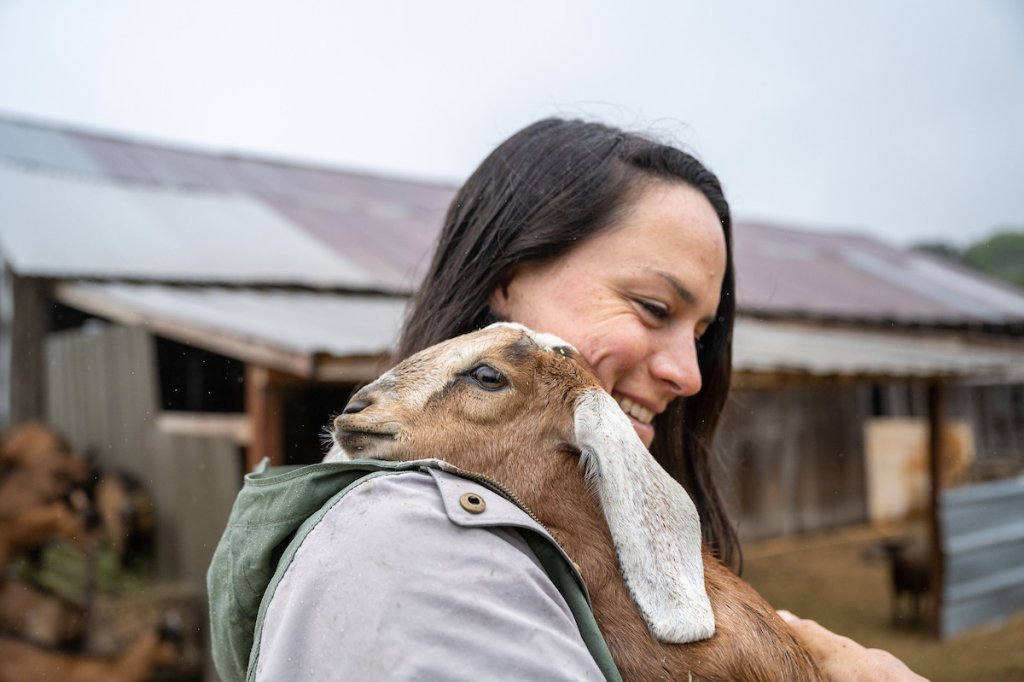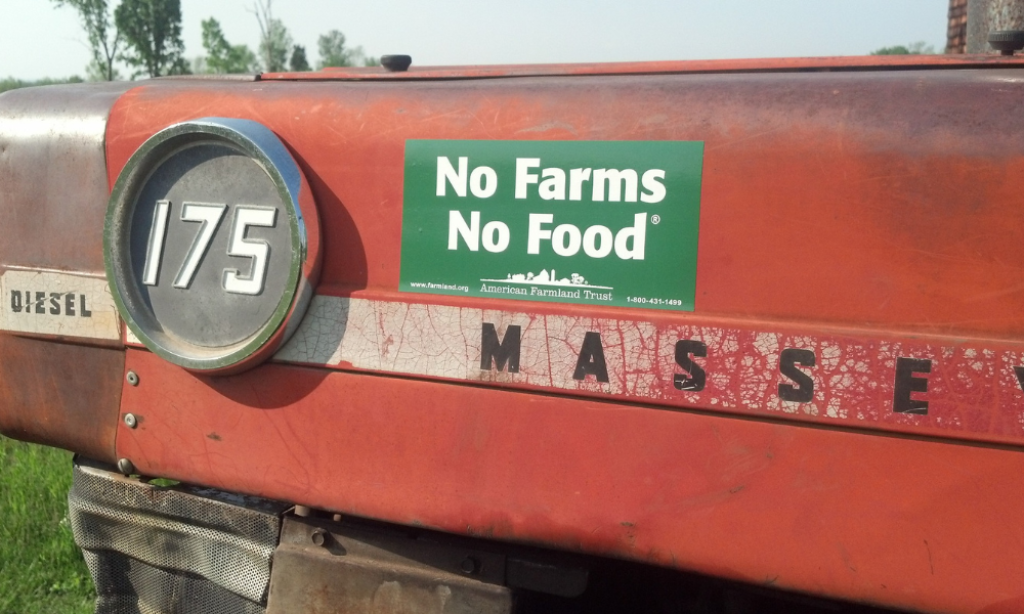NEW REPORT: Smarter Land Use Planning is Urgently Needed to Safeguard Ag Land in Arizona, Colorado, New Mexico and Nevada Amidst Historic Drought
WASHINGTON, DC – Smart growth and investment in Arizona, Colorado, New Mexico and Nevada downtowns and main streets must occur now to secure the land that grows our food, according to American Farmland Trust’s new report Farms Under Threat 2040: Choosing an Abundant Future and the accompanying web mapping tool.
AFT’s Farms Under Threat research has shown that by 2040, as many as 1,486,341 acres of farmland may be lost to urban and low-density conversion across the four states. While this may seem small compared to the total amount of agricultural acreage in the region, most of that loss will be highly concentrated around urban centers experiencing rapid population growth, particularly in the Albuquerque, Denver, Las Vegas and Phoenix metro areas. This loss will disproportionately impact the region’s most productive, versatile land, threaten the future for small and peri-urban farms and limit opportunities for new and beginning farmers.
By 2040, agriculture in the region will also be significantly constrained by water availability. Severe drought conditions will further deplete scarce irrigation resources. Couple those climatic factors with increased pressure from urban, low-density and solar development, and the land base will be squeezed from all sides.
Of the four states, Arizona will be the hardest hit, followed by Colorado, New Mexico and Nevada. In fact, Arizona’s Maricopa County is projected to lose the most farmland in the nation. Colorado’s Broomfield County is the nation’s number-one county projected to convert the largest percentage of remaining agricultural land into development. Nevada’s Clark County is the nation’s fifth-fastest to lose farmland.
Arizona
If recent trends continue, 444,500 acres of Arizona’s farmland and ranchland will be paved over, fragmented, or converted to uses that jeopardize agriculture by 2040. That represents an area more than the size of Phoenix.
In the worst-case scenario of runaway sprawl, Arizona could lose as many as 518,700 acres of farmland.
56% of the conversion will occur on Arizona’s best land.
By making smart growth choices and investing in farmland protection today, Arizona residents can save 216,100 acres of farmland and ranchland. That is the equivalent of saving 500 farms, $99 million in farm output and 700 jobs.
Maricopa is the nation’s most likely to lose farmland, followed by Pinal County (18th fastest in nation) and Pima County (42nd fastest in nation). This loss of farmland will impact Arizona’s economy and food production.
According to the 2017 Census of Agriculture:
Arizona remains a top state for vegetables and melons, ranking fifth out of all states.
Maricopa County had the highest market value of products sold in the state, followed by Yuma County. Together with Pinal County, these three counties combined accounted for 83% of the total for the state.
The top three agricultural products by market value in Arizona represent 65% of all sales for the state. These were vegetables, melons, potatoes, and sweet potatoes followed by milk from cows and cattle and calves. Milk from cows is the top commodity for Maricopa County and it ranks sixth in the nation for all counties producing milk.
According to Maricopa County’s Arizona Water Factsheet:
Located in the Sonoran Desert, Maricopa County receives less than 11 inches of rain per year. Despite the dryness, more than half of the state’s population – some 4.5 million people – live in the county.
Until 1990, more water was used in the Phoenix AMA for agriculture than for cities. By 2019, half of all water was used by municipalities and only 30% was used for agriculture.
These water restrictions demonstrate another reason why Arizona must use smart growth practices to protect its valuable agricultural resources.
Colorado
If recent trends continue, 417,500 acres of Colorado’s farmland and ranchland will be paved over, fragmented, or converted to uses that jeopardize agriculture by 2040. That represents an area more than four times larger than the city of Denver.
In the worst-case scenario of runaway sprawl, Colorado could lose as much as 525,300 acres of farmland.
53% of the conversion will occur on Colorado’s best land.
By making smart growth choices and investing in farmland protection today, Colorado residents could save 258,100 acres of farmland and ranchland. That is the equivalent of saving 1,200 farms, $53 million in farm output, and 1,700 jobs.
The counties most likely to lose farmland are El Paso (first in state; 16th in nation), followed by Douglas (33rd in nation) and Larimer.
Colorado’s Broomfield County is the nation’s number-one county projected to convert the largest percentage of remaining agricultural land into development.
According to the Colorado Farm Bureau:
Colorado agriculture is the second largest industry in the state, contributing over 40 billion dollars to the economy each year through crops, feed, livestock, equipment, and more. Additionally, agriculture creates 170,000 jobs annually.
About 38,800 farms, spread across 31.8 million acres, call Colorado home. The Centennial State is the number-one producer for millet in the country and ranks in the top 10 for another 20 commodities that Colorado grows.
The drought continues to challenge Colorado agriculture, too. Douglas County saw its driest year to date over the past 128 years (January-April 2022), according to the Drought Index.
New Mexico
If recent trends continue, 204,965 acres of New Mexico’s farmland and ranchland will be paved over, fragmented, or converted to uses that jeopardize agriculture by 2040. That represents an area more than six times the size of Santa Fe.
In the worst-case scenario of runaway sprawl, New Mexico could lose as much as 263,673 acres of farmland.
52% of the conversion will occur on New Mexico’s best land.
By making smart growth choices and investing in farmland protection today, New Mexico residents can save 154,700 acres of farmland and ranchland. That is the equivalent of saving 254 farms, $16 million in farm output, and 485 jobs.
Hardest-hit counties are Bernalillo (first in state; 47th fastest in nation), Colfax and Dona Ana.
According to New Mexico Department of Agriculture:
Agriculture is one of the state’s principal industries with cash receipts approaching $3 billion annually and directly supports over 23,000 jobs in the state.
New Mexico is the seventh highest milk and eighth highest cheese producing state in the nation. New Mexico’s individual dairy herds are the largest in the country with milk production per cow second only to Arizona. Milk production supports several of the biggest cheese manufacturing plants in the country.
New Mexico also boasts the highest concentration of pecan production in the world and one of top three pecan producing states in the nation. New Mexico leads in cash receipts for pecan production with superior quality nuts and some of the largest orchards.
New Mexico’s agriculture includes onions, potatoes, pumpkins, watermelons, lettuce, cabbage, corn, and beans. The state supplies 85% of the nation’s fresh onions during June and remains the country’s largest producer of her most famous export – chile peppers.
Farmers and ranchers provide habitat for 75 percent of the state’s wildlife, reports New Mexico Agriculture.
Nevada
If recent trends continue, 155,724 acres of Nevada’s farmland and ranchland will be paved over, fragmented, or converted to uses that jeopardize agriculture by 2040.
In the worst-case scenario of runaway sprawl, Nevada could lose as many as 178,668 acres of farmland.
23% of the conversion will occur on Nevada’s best land.
By making smart growth choices and investing in farmland protection today, Nevada residents can save 74,600 acres of farmland and ranchland. That is the equivalent of saving 51 farms, $4 million in farm output and 129 jobs.
The counties most likely to lose farmland are Clark County (which was also the nation’s fifth fastest), followed by Washoe and Lyon.
According to the Nevada Department of Agriculture:
Agriculture is one of the state’s leading industries. Nevada’s cattle and cow operations are the largest sector. The state’s ranches rank third in size nationally, averaging 3,500 acres.
Other products include dairy, sheep, lambs, and hogs. Alfalfa is the leading cash crop.
On irrigated land, the state grows potatoes, barley, winter and spring wheat, corn, oats, onions, garlic, and honey, along with mint and fruits.
Nevada agriculture (ranching and farming) contributed $787.8 million to the state economy in 2020, according to the 2021 Nevada Department of Agriculture biennial report.
“As much of the country becomes increasingly inhospitable due to rising temperatures and drought, the states of Arizona, Colorado, New Mexico and Nevada may see even greater population pressure than Farms Under Threat was able to identify,” said Kara Heckert, Resilient Agriculture West Advisor. “The decisions our communities make now, with respect to housing density and urban growth, will be essential in ensuring we can accommodate additional population increases without compromising more farmland and open space.”
For a brief summary of national results: National media release.
Register for August 2, 2022, Arizona Webinar here
Register for September 8, 2022, Colorado Webinar here
Register for September 12, 2022, New Mexico Webinar here
###
American Farmland Trust is the only national organization that takes a holistic approach to agriculture, focusing on the land itself, the agricultural practices used on that land, and the farmers and ranchers who do the work. AFT launched the conservation agriculture movement and continues to raise public awareness through our No Farms, No Food message. Since our founding in 1980, AFT has helped permanently protect over 6.8 million acres of agricultural lands, advanced environmentally-sound farming practices on millions of additional acres and supported thousands of farm families.




